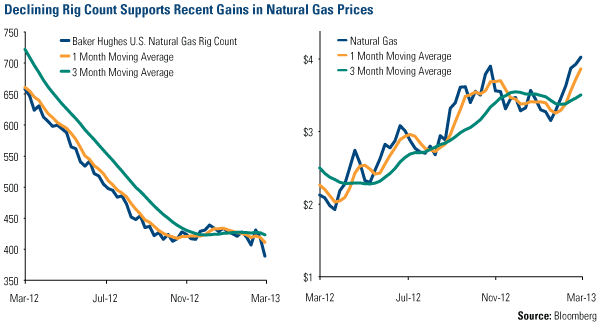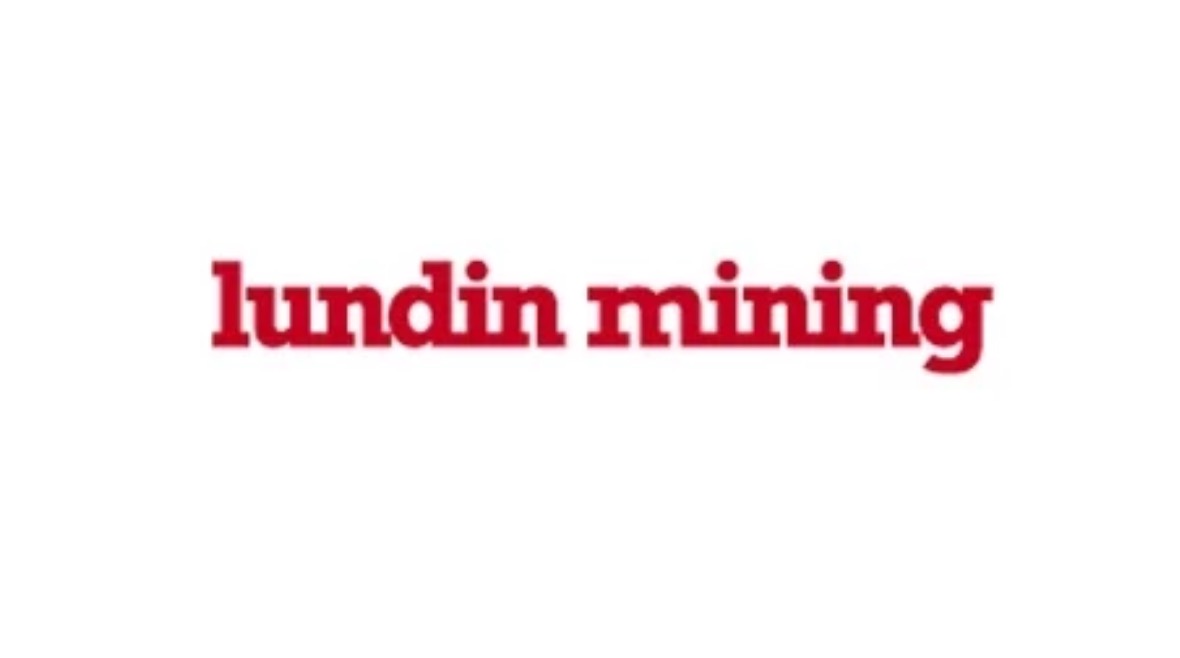Energy and Natural Resources Market Radar (April 8, 2013)
Strengths
- The price of natural gas gained nearly three percent this week to $4.14 following a positive Goldman Sachs report that highlighted tighter supply and demand fundamentals after colder than normal temperatures last month.
- According to OPEC, China is expected to overtake the U.S. as the world’s top crude importer by 2014. China’s crude oil imports may surpass 6 million barrels a day by the end of this year.
Weaknesses
- Oil refiners in Europe will shut 10 percent of their plants this decade as fuel demand falls to a 19-year low. Of the region’s 104 facilities, 10 will shut permanently by 2020 from France to Italy to the Czech Republic, a Bloomberg survey of six European refinery executives showed. Oil consumption is headed for a fifth year of declines to the lowest level since 1994, the International Energy Agency estimates. Two-thirds of European refineries lost money in 2011, according to Essar Energy Plc, owner of the U.K.’s second-largest plant.
Opportunities
- The U.S. petrochemicals industry is set to make a spectacular comeback after suffering from low demand and high feedstock costs for most of the previous decade. As per GlobalData, in the middle of the last decade, the discovery of shale gas changed the dynamics of the U.S. petrochemicals industry by leading to the revival of the natural gas industry which improved the ethane supply and created high profit margins at the end of 2011 and 2012.
- China, the world's number two corn importer, may need to raise corn imports to a record 7 million tonnes this year due to heavy snow this winter that damaged the grain and made it less suitable as animal feed, according to China Daily. The projected import figure is close to the Chinese government's import quota of 7.2 million tonnes for corn.
- Plans to build a new industry to export liquefied natural gas (LNG) off Canada's West Coast have become a lot more complicated. Discontent among Asian buyers about high LNG prices has evolved into a standoff between Asian consumers and North American producers that could make it more difficult to get new projects off the ground. The pricing disagreement represents a new hurdle for the five LNG projects planned for British Columbia, which are facing high costs and construction challenges, and have been banking on the so-called "Asian premium" to make their economics work. Japan is paying about US$17 per million British thermal units for its LNG imports, but it is well aware of the shale gas revolution under way in the Western hemisphere and is pushing for prices that are reflective of the cost of supply, plus liquefaction and transportation costs, Mr. Maeda said. The supply cost is around US$6 to US$7 in North America, while the market price is around US$3 to US$4 because of ample supplies from shale discoveries.
Threats
- The Chile port strike is set to continue as no accord reached with the union, Bloomberg reports. The strike, which began at Angamos March 16 and spread to other northern and central Chilean ports, is preventing about 9,000 metric tons per day of refined copper from being shipped, or about 60 percent of the country’s 16,000-ton total, Mining Minister Hernan De Solminihac told reporters in Santiago. The port strike is also restricting imports of materials such as sulfuric acid used by mines and may lead to the halting of some operations, he said.
- Gold is likely to be in a bear market by early 2014 as the world economy returns to "normality," Thomson Reuters GFMS, the research group, said today at the launch of the 2013 edition of its annual gold survey. However, despite the present price weakness, it is premature to say it is there yet, they argued, predicting this year "one last flourish" that will see the gold price rise as high as $1,850 an ounce and average $1,730 an ounce, a nominal record (with a low of $1,530 an ounce). The rationale? A forecast surge in investment demand of 20 percent year-over-year, driven by easy money, sluggish economic growth, rising inflation and the possibility of shocks to the economic system. Otherwise demand is forecast to decline, with jewelry fabrication hit by the high price and sluggish economy, industrial demand suffering from substitution by cheaper alternatives and central bank purchases easing from 2012's 48-year high. More supportive, however, will be weak supply, with only a modest increase in mine output and scrap supply.













